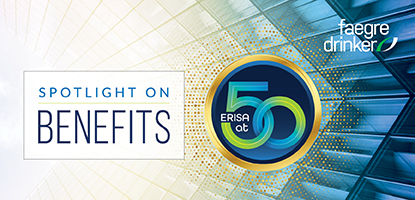In FAQs Part 56, issued on December 23, 2022, the Treasury Department and the Departments of Labor and Health and Human Services (collectively, Departments) issued important guidance on prescription drug benefit and cost reporting required of health plans and issuers (collectively, health plans). The FAQ guidance includes good faith relief for the 2020 and 2021 submissions. Under the good faith relief, the Departments will not take enforcement action with respect to any health plan that uses a good faith, reasonable interpretation of the applicable regulations and instructions in making its submission. The Departments also provide a submission grace period through January 31, 2023 and will not consider a health plan to be out of compliance provided that the health plan makes a good faith submission of 2020 and 2021 data on or before January 31, 2023.
The required data submission is called prescription drug data collection, or RxDC reporting. Through RxDC reporting, health plans report certain detailed information related to prescription drug and other health care spending. Health plans are required to complete RxDC reporting annually beginning with 2020 information. Reporting for 2020 and 2021, the first years for which reporting is required, was previously delayed until December 27, 2022 and is now subject to the submission grace period through January 31, 2023. Starting with 2022 information, annual reporting is due by June 1 of the following year. While the submission grace period may have come after many health plans have already substantially completed RxDC reporting, the good faith relief is particularly good news for health plan administrators who have struggled to interpret and apply some of the requirements for the first submissions.
In addition to the good faith relief and submission grace period, the FAQs include clarifications and flexibilities to facilitate the submission process for 2020 and 2021 data only[1]:
- Reporting entities reporting on behalf of multiple health plans may create more than one submission for a year without the submissions being considered duplicate submissions.
- Multiple reporting entities may submit the same type of data file on behalf of the same health plan, which relaxes the existing requirement to consolidate a health plan’s data into a single data file for each type of data.
- The requirement for multiple reporting entities submitting the required data on behalf of one or more health plans in a state and market segment to aggregate required data to at least the aggregation level used by the reporting entity that submits the total annual spending data for the health plan(s) is suspended for the filings for 2020 and 2021. For 2020 and 2021 data, a reporting entity submitting the required data may, within each state and market segment, aggregate at a less granular level.
- A health plan or its reporting entity that is submitting only the plan list, premium and life-years data, and narrative response, but not any other data may submit the file by email to RxDCsubmissions@cms.hhs.gov instead of submitting in the Health Insurance Oversight System reporting system. The emailed submission must include the plan list file, premium and life-years data (data file D1), and a narrative response, and may include optional supplemental documents. The name of each file should include the reference year of the submission, the plan list or data file type (g. P2, D1), and the name of the group health plan sponsor.
- Reporting on vaccines through the National Drug Codes for vaccines that were added to the CMS drug and therapeutic class crosswalk on October 3, 2022 is optional.
- Reporting entities are not required to report a value for “Amounts Not Applied to the Deductible or Out-of-Pocket Maximum” in data files D2 and D6 and may leave the data fields blank in the applicable columns.
If you have questions about RxDC reporting, please contact a member of the Faegre Drinker Benefits & Executive Compensation team.
[1] The Departments will monitor compliance to determine whether to extend these flexibilities for future reporting deadlines. The Departments will communicate any such extensions.

